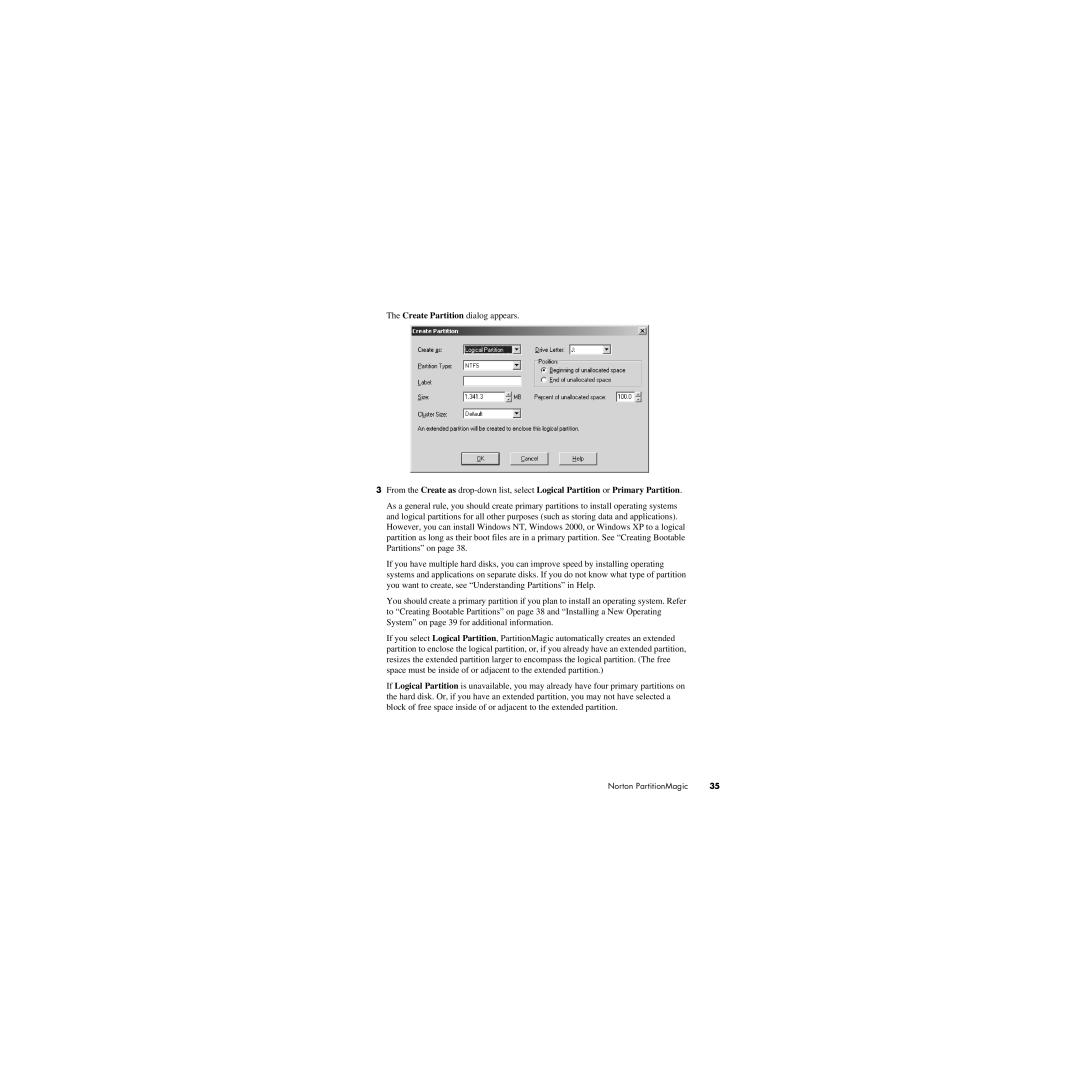
The Create Partition dialog appears.
3From the Create as
As a general rule, you should create primary partitions to install operating systems and logical partitions for all other purposes (such as storing data and applications). However, you can install Windows NT, Windows 2000, or Windows XP to a logical partition as long as their boot files are in a primary partition. See “Creating Bootable Partitions” on page 38.
If you have multiple hard disks, you can improve speed by installing operating systems and applications on separate disks. If you do not know what type of partition you want to create, see “Understanding Partitions” in Help.
You should create a primary partition if you plan to install an operating system. Refer to “Creating Bootable Partitions” on page 38 and “Installing a New Operating System” on page 39 for additional information.
If you select Logical Partition, PartitionMagic automatically creates an extended partition to enclose the logical partition, or, if you already have an extended partition, resizes the extended partition larger to encompass the logical partition. (The free space must be inside of or adjacent to the extended partition.)
If Logical Partition is unavailable, you may already have four primary partitions on the hard disk. Or, if you have an extended partition, you may not have selected a block of free space inside of or adjacent to the extended partition.
Norton PartitionMagic | 35 |
